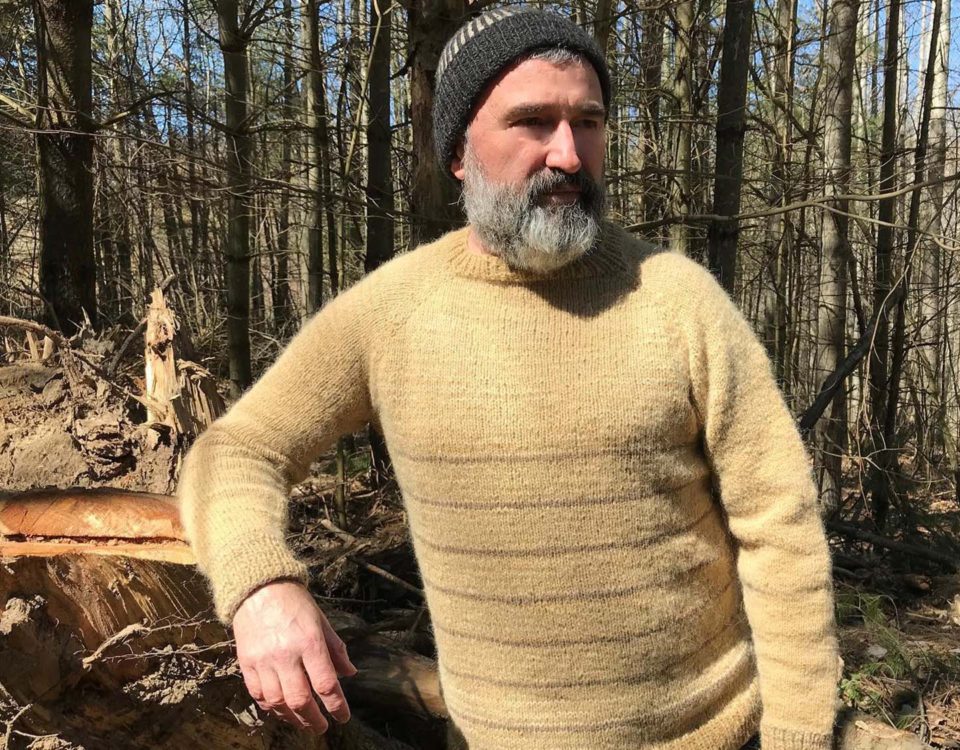Christopher Walker
Cabin Boy Knits
Stirling, Ont.

Fibre artist Christopher Walker has fond childhood memories of listening to the clicking of his grandmother’s needles as they watched Hockey Night in Canada. “My grandmother definitely planted the knitting seed, [but] as a boy I wasn’t encouraged to knit,” says Christopher. “It wasn’t until I was an adult that I ran into other male knitters and decided to learn.”
Today, Christopher is the founder and owner of the label Cabinboyknits, a company producing eco-friendly naturally dyed yarn to clients globally. Through his use of fibre, fashion and people, Christopher’s work often challenges society’s perception of gender and sexuality. His work has been featured on the runway and at art gallery showings, and he frequently lectures and teaches in Europe and throughout North America.
His atelier is in a pre-confederation log cabin in the Oak Hills. “I can’t think of a more idyllic place to find inspiration and create,” he says, adding “I have always been fascinated and inspired by my natural surroundings. I feel it is innate to use nature to obtain colour through the use of botanicals, minerals and insects to create the fibre used in my art and designs.”
Knitting and wool has a long and storied history; while the exact history of knitting is unknown, due to the biodegradability of natural fibres and implements, the oldest knitted artifacts (made from cotton, not wool) are socks from Egypt, dating from the 11th century. Knitting evolved from function to fashion, and then declined in popularity before a resurgence in the 21 century, alongside the “Handmade Revolution.”
Christopher balances paying homage to the past with his natural yarn dyeing practices, while simultaneously disrupting societal norms: “Prior to 1868, (the invention of acid based dyes), all dyes were derived from plants, insects and minerals. I use many traditional recipes, as well as create colours and techniques of my own.”
At the same time, he acknowledges how traditional gender roles (i.e., knitting as ‘women’s work’) influences his art: “I challenge viewers to question binary gender perceptions, and stereotypes, both through performance art and art installations,” he says. He takes inspiration from nature, art, people, fibre and fashion, and also in the works of Canadian artist Janet Morton and Australian artist Casey Jenkins.
Christopher has a YouTube channel with over 12,000 subscribers that showcases naturel dyeing, fibre and design.
